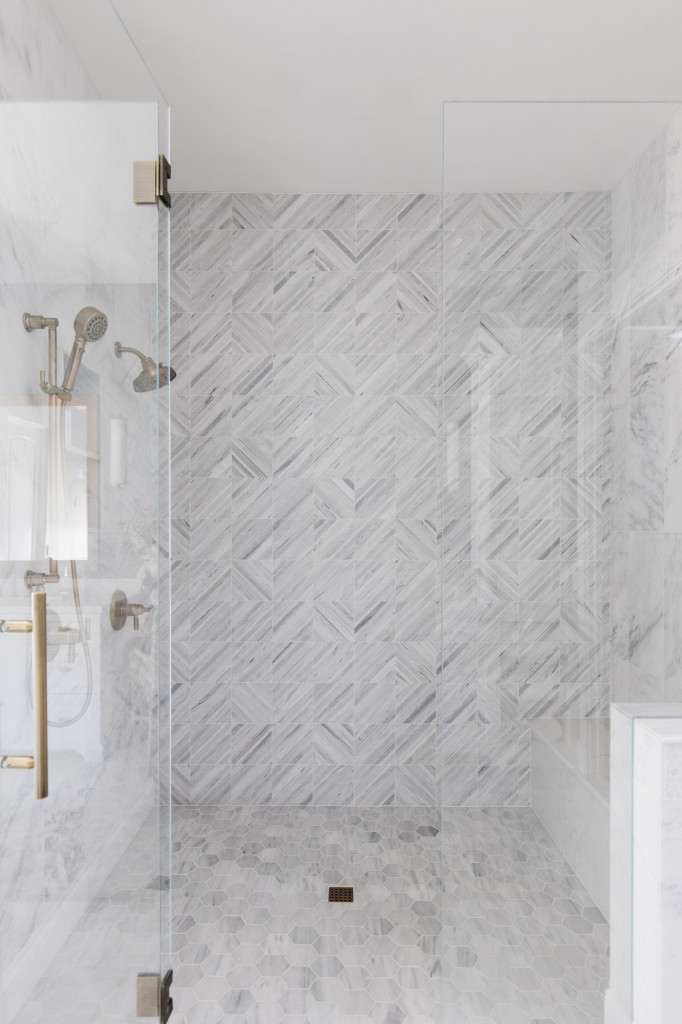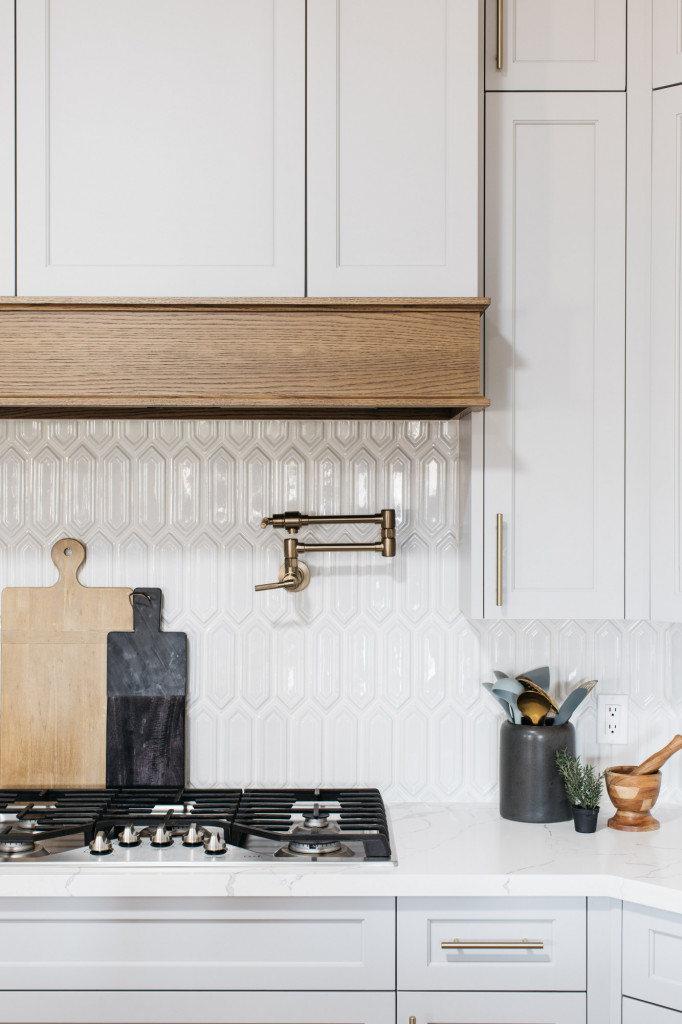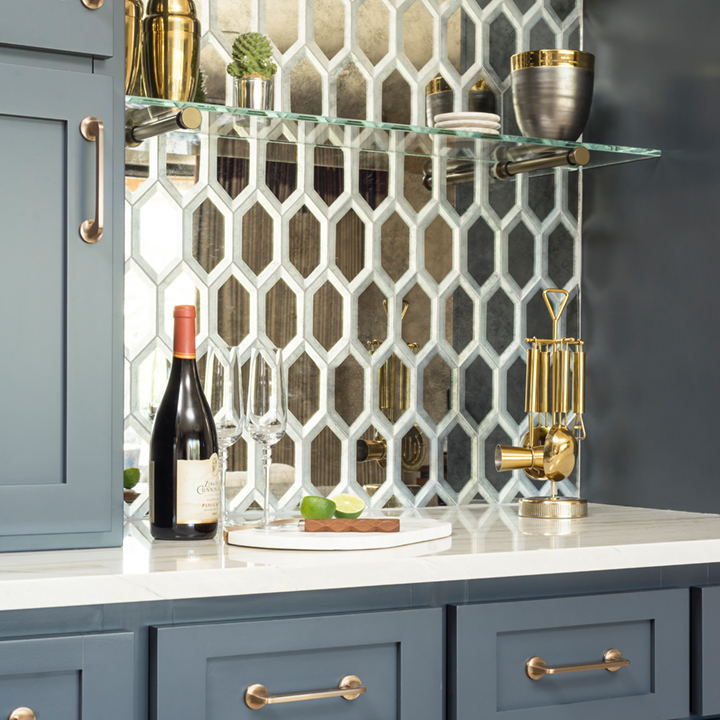Did you know tile has quite the history? We’re talking history that dates back to ancient Egypt and Babylon! In ancient Egypt, the very first clay handmade and hand-painted tiles were easy to make and beautiful! It makes my designer heart happy to know that beauty was just as important as function back in 4000 BC.
Tile is one of my favorite materials to design with. It can add texture, pattern, or detail to any design. But there is a lot to know about tile… the different types, where it can be used, and how to get maximum impact. Don’t worry, I won’t geek out on you too much, but when you are building a luxury custom home, it’s important to understand the basics of tile and let your designer handle the specific details.
Wall Tile vs. Floor Tile
While most floor tiles can be used as a wall tile, you don’t want to use a wall tile for flooring. Floor tiles require an extra level of durability to withstand the wear and tear that foot traffic creates. It is key to read the manufacturer’s specifications that include the recommended use for each tile and follow it.
Wet Zone Tiles
Not all tiles can be used in wet zones. Again, paying attention to the manufacturer’s recommended use is key when selecting shower wall or bathroom floor tiles. For bathroom floors, we recommend finding a tile that has an R-11 rating, which is an anti-slip rating.
The trick is that tile manufacturers aren’t required to give any detailed info for their tiles. Working with an interior designer who only selects from reputable tile sources will ensure you don’t end up on your back the first time you step out of the shower or have cracking issues down the road.
Now that we got the tile logistics out of the way, let’s talk about the fun stuff: the beauty of different tile materials!
Natural Stone Tile
Natural stone tiles include all the beautiful tiles that mother nature herself creates. Marble, slate, travertine, and limestone tiles belong in this category and are a favorite of mine because it displays the art that our earth has to offer. Natural stone tiles often include veining and variation which can create a gorgeous design but also can be surprising if you aren’t expecting the variation. To maximize the beauty of the look of the tiles, natural stone tiles need to be sealed and may require some maintenance over time.

- Marble: Considered one of the most luxurious natural stones that have a timeless look. It is susceptible to etching and staining and needs regular sealing and care.
- Slate: Has uneven surface textures and lots of variation from one tile to the next. It’s waterproof and very durable but it’s limiting in what color tones it comes in.
- Travertine: Travertine is actually in the limestone family but has its own name because of its warmer color palette. It’s a very durable stone that is great for flooring and outdoors.
- Limestone: Limestone is a very hard durable stone and comes in lighter and brighter tones than travertine. It’s also very durable and great for flooring and outdoors, because of its lighter palette it can stain, but a good sealer can prevent that.
Man-Made Tiles
Ceramic, porcelain, cement, glass, metal, and zellige tiles are all man-made and not cut from the earth. These tiles are made by machine or can be formed by hand. Some of the tiles in this category can be very delicate and intricate in design and texture while others are engineered specifically for durability.
- Ceramic: Ceramic tile is a very broad category that includes tiles that aren’t defined by the other tile names below. Ceramic tiles go through a firing process that makes them durable and can be made into any color or texture. Your typical white subway tile is a good example of a ceramic tile.
- Porcelain: High-density tile that doesn’t absorb hardly any moisture or water, made from special clays and fired at a very high temperature to ensure durability.
- Cement: Cement tiles are often used for their pretty and often bold patterns yet casual feel. They aren’t fired but the nature of them being made out of cement creates their durable nature. They do need to be sealed to avoid staining and only very light grouts can be used for installation.
- Glass: Glass tiles are a fun way to add color or appeal to a design that would benefit from its translucent or reflective look. Not recommended for flooring but great for wall tile, and great in wet zones.
- Metal: Metal tiles are usually in a small format and are best for wall tile applications. The very nature of the material, metal, creates a distinct look and design. Easy to clean and maintain it’s more about the look and design than anything else.
- Zellige: Zellige tile is a hand-glazed Moroccan tile that has the internet buzzing right now. It’s used for its imperfect nature with each tile slightly different in texture, thickness, and color. It’s typically installed with minimal grout and has a shiny finish to it but comes across as casual instead of glam.


Tile can dictate the design of kitchens, laundry rooms, and bathrooms. So understanding the durability you need and the beauty you want will make tile selection so much easier and enjoyable. Don’t worry, if you walk into a tile showroom and see 437 different tiles and begin to feel overwhelmed… just step away, take a deep breath, and call us! We will design your entire new build project from perfect tile selections to all the other details you haven’t even thought of yet!

